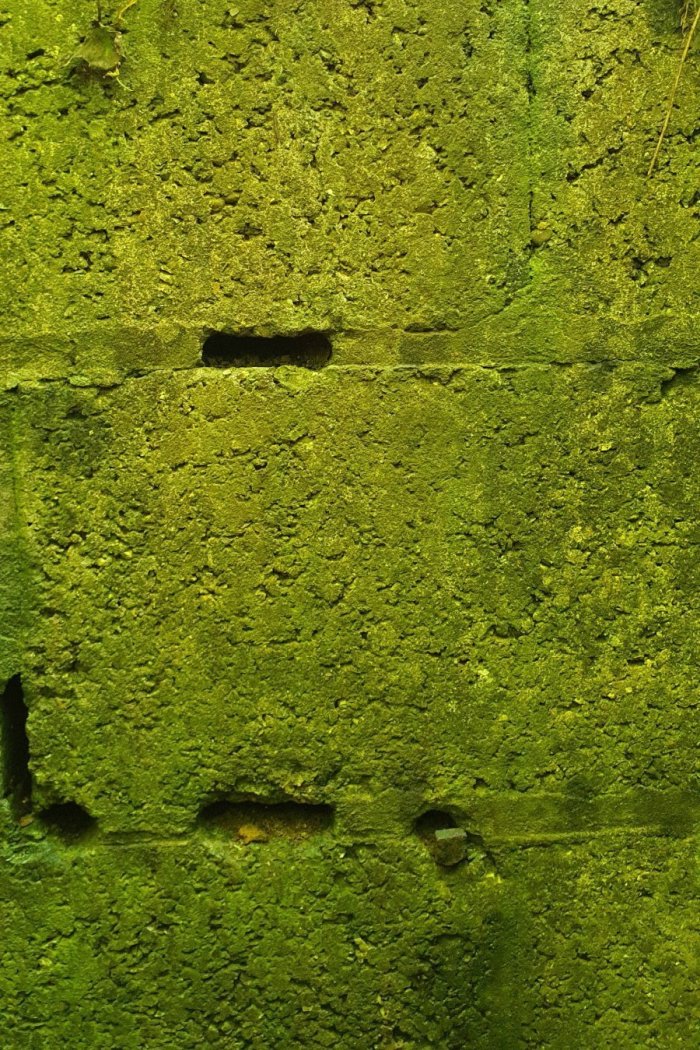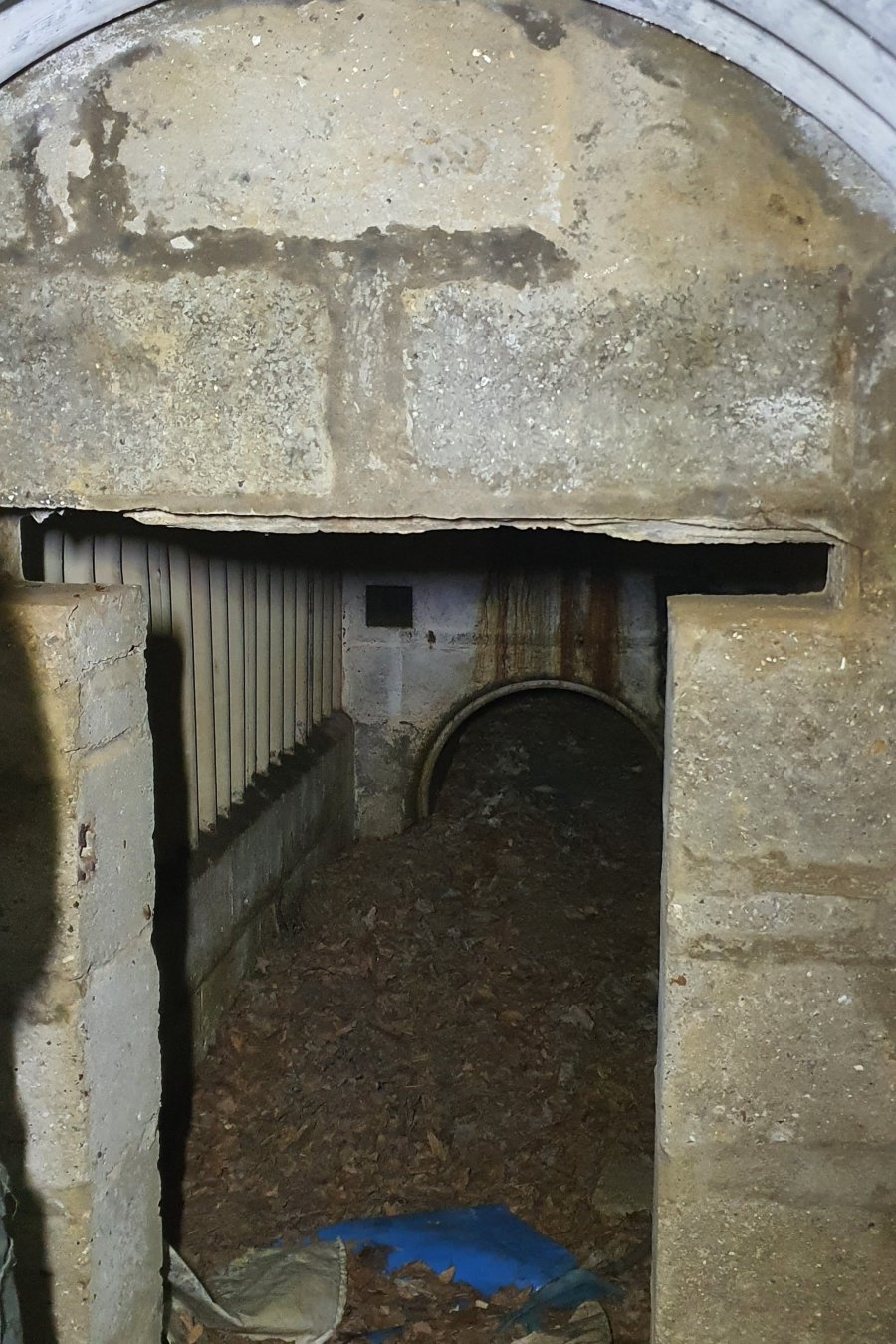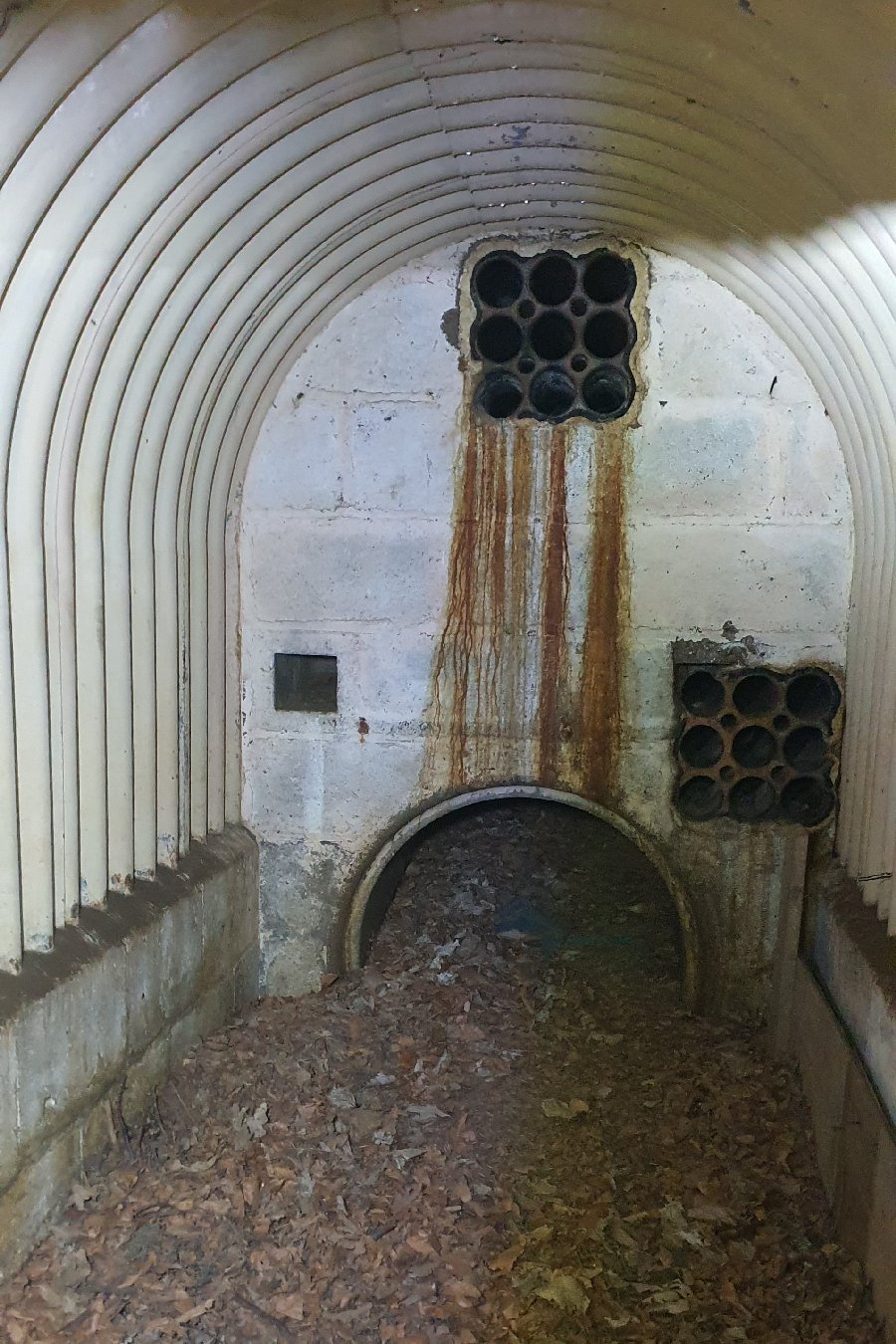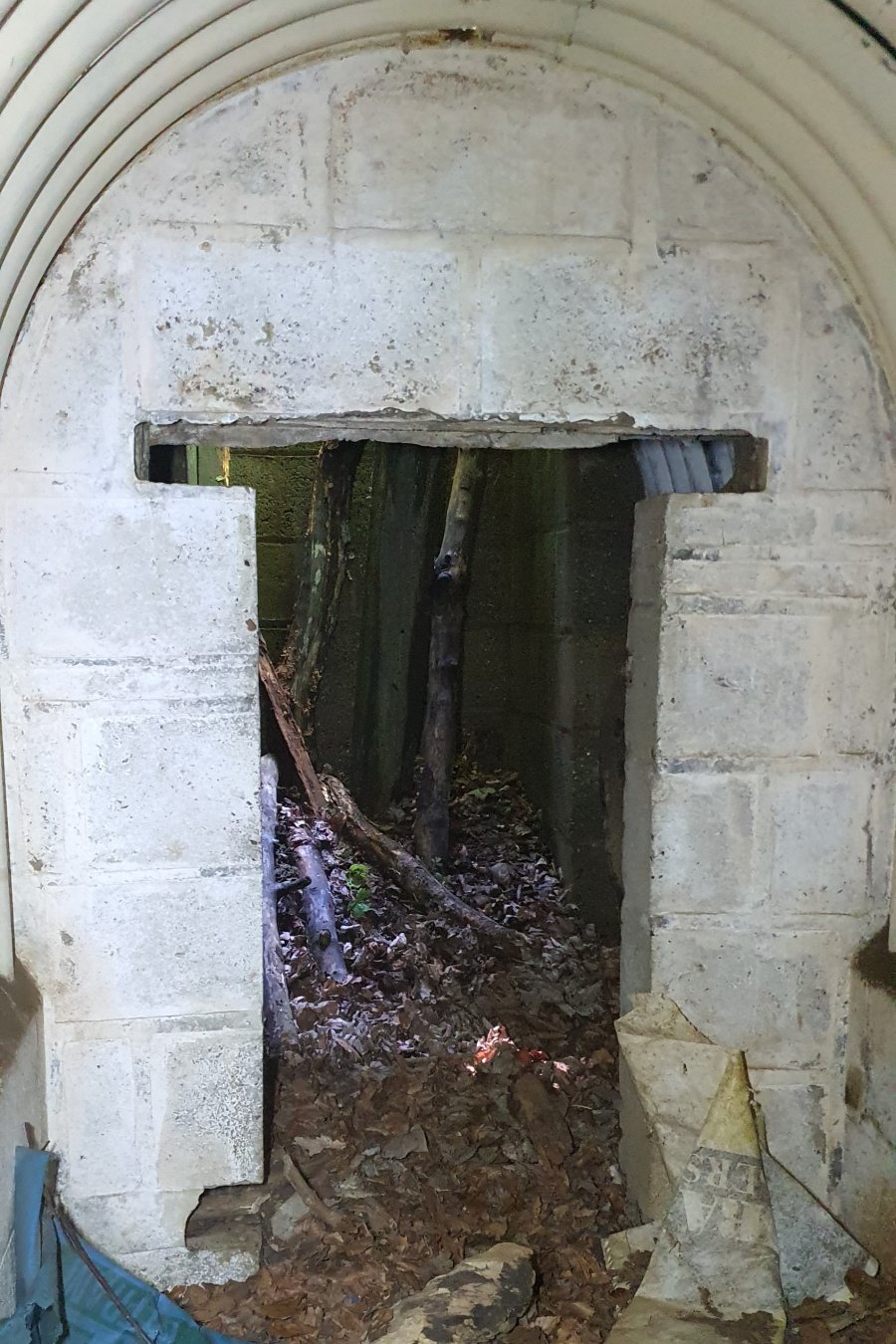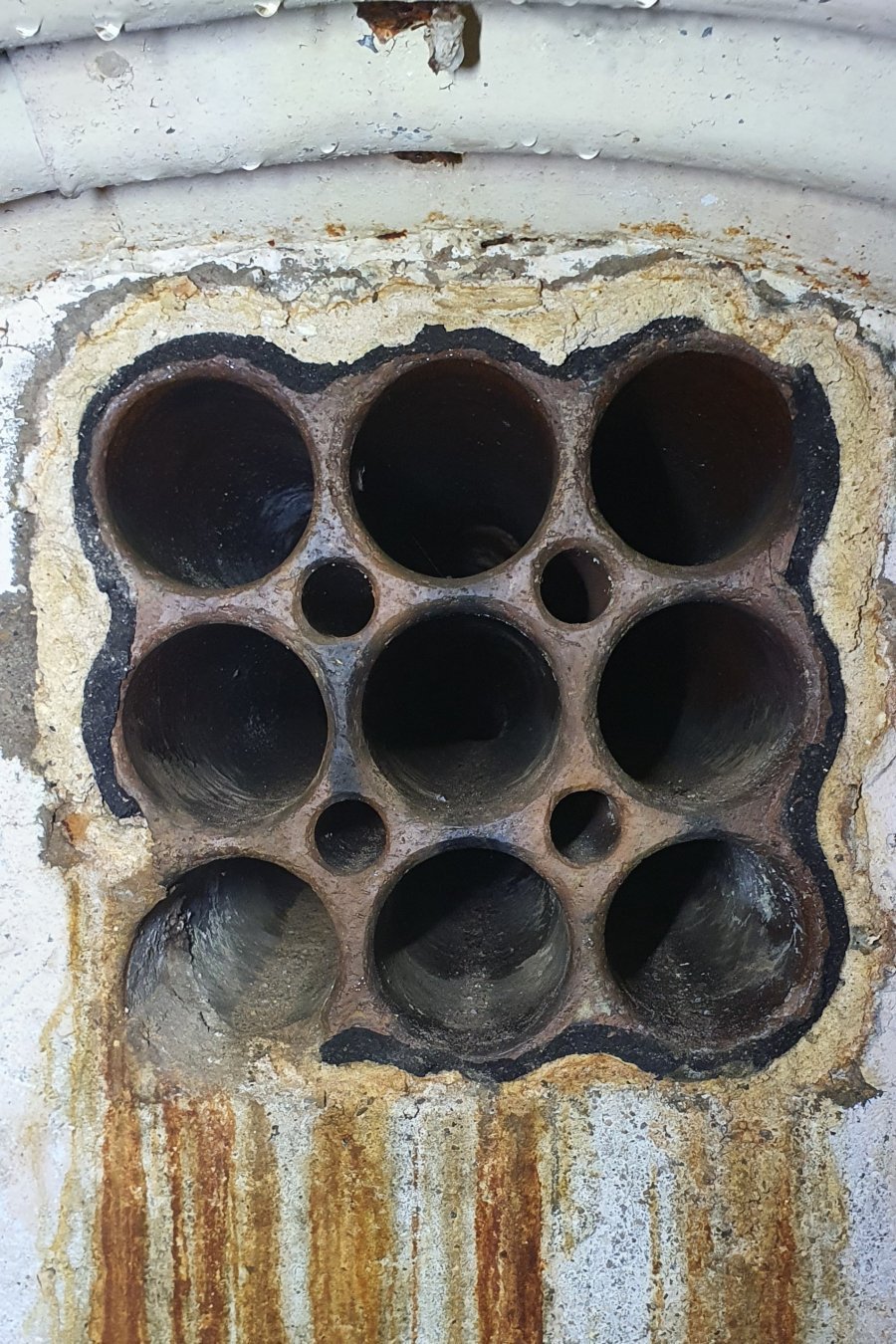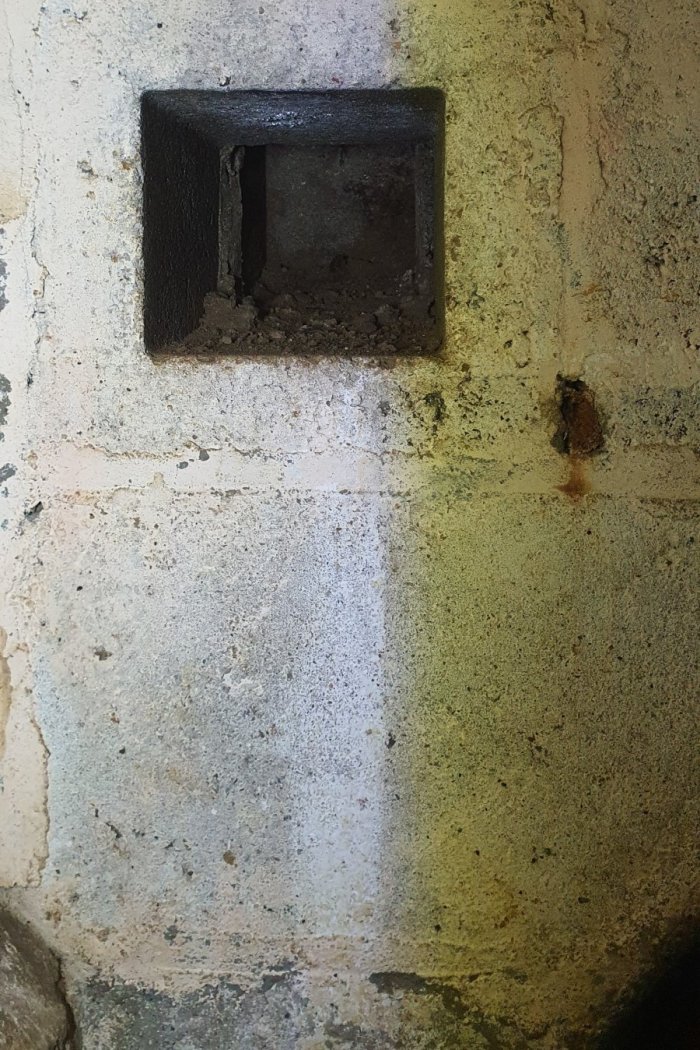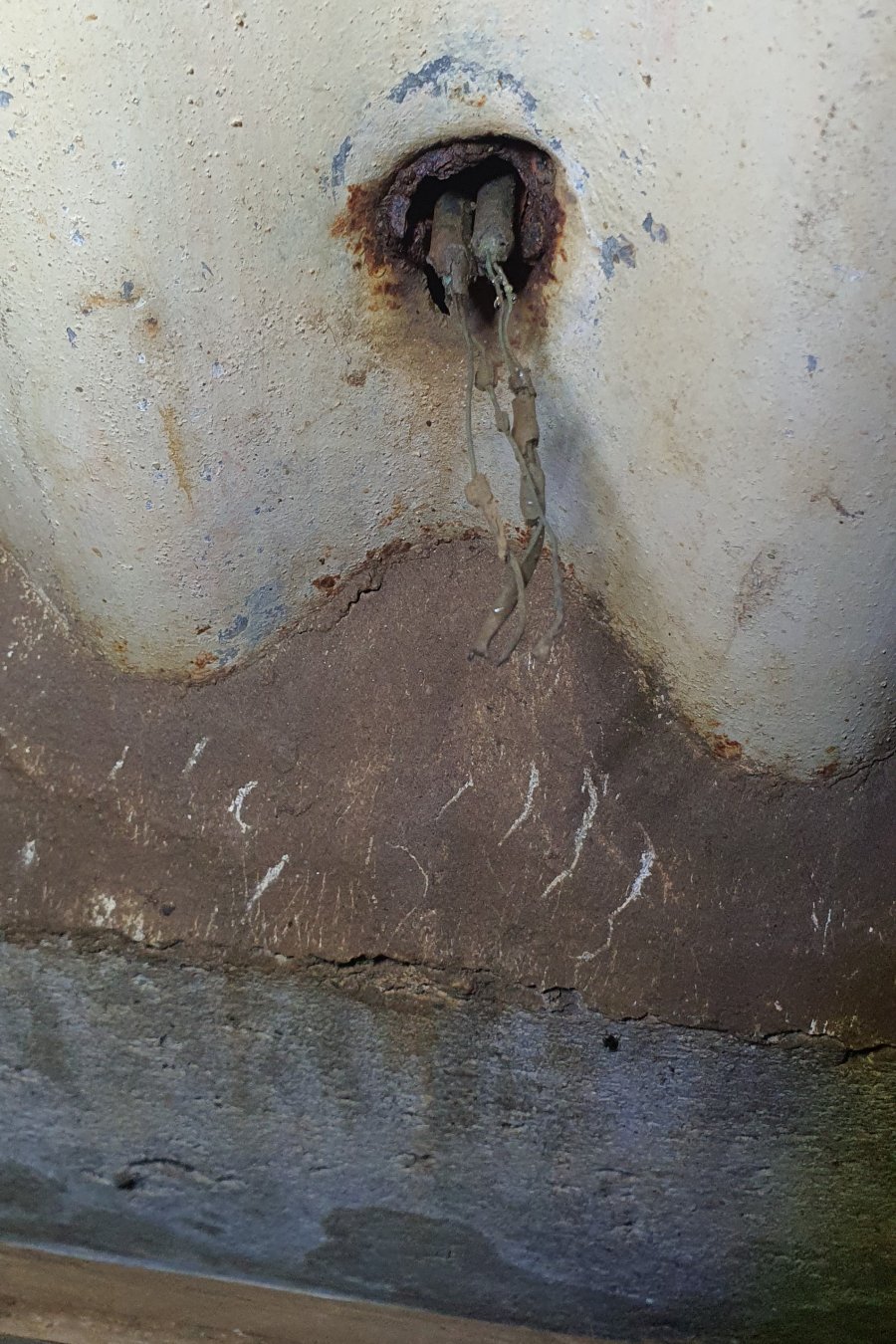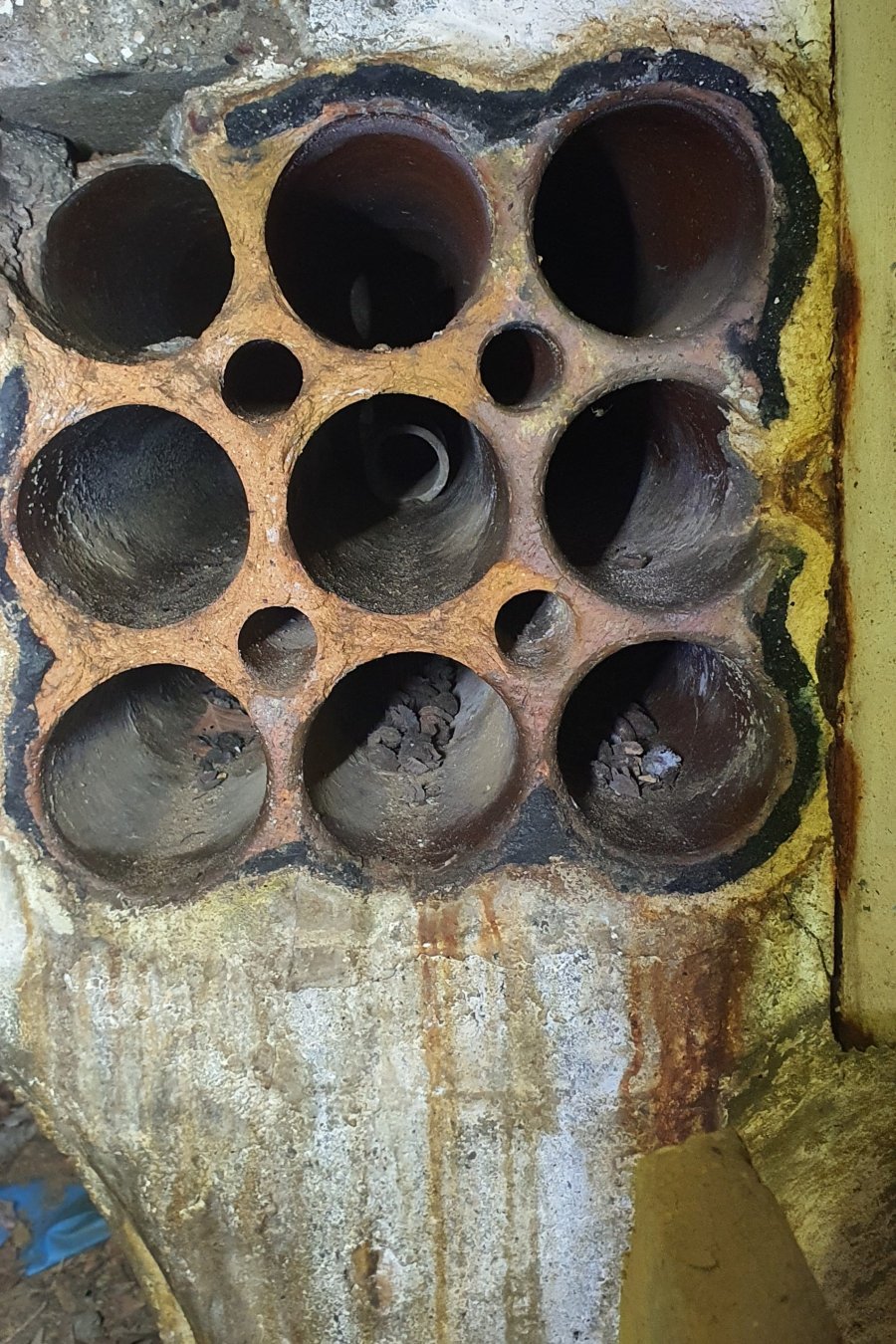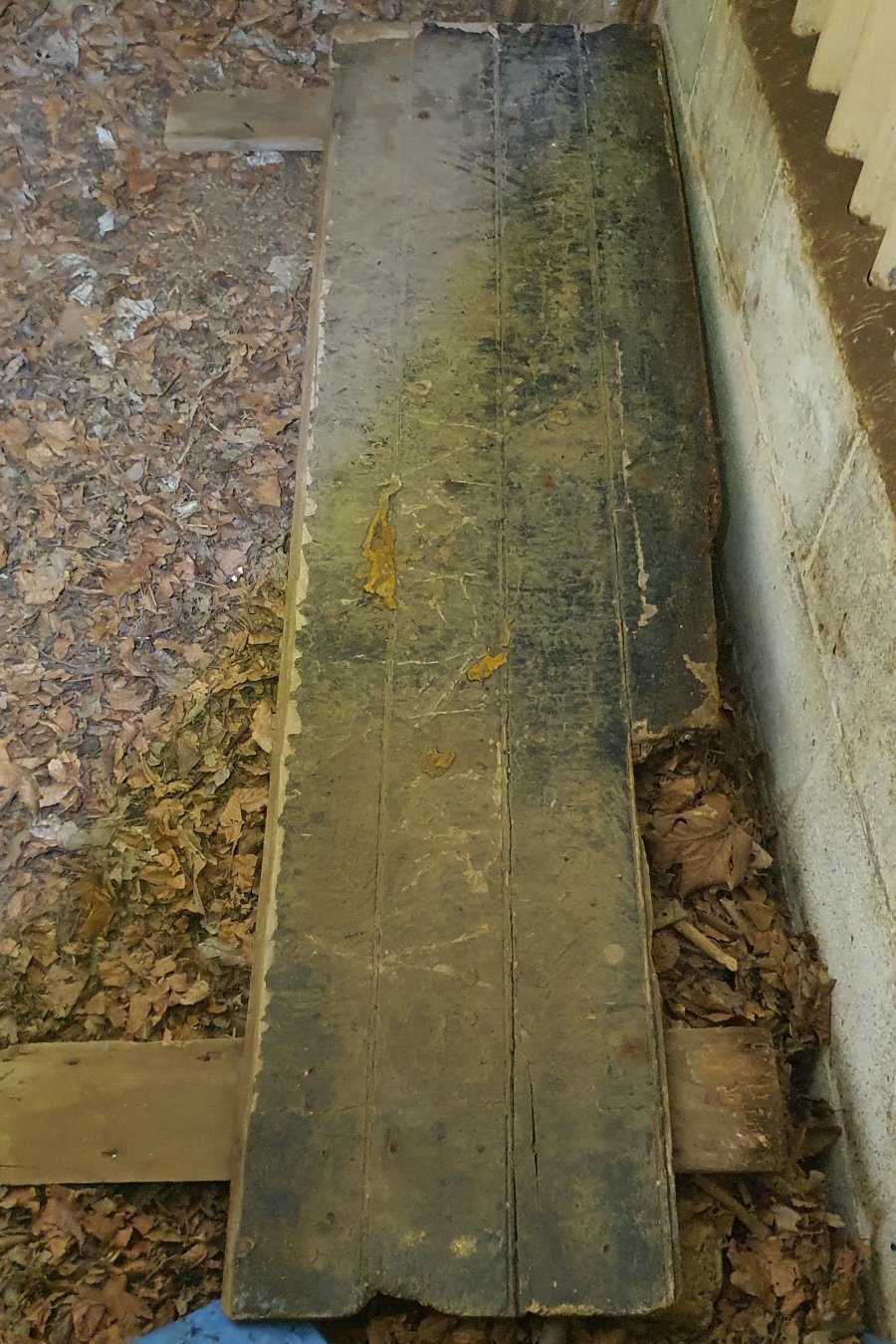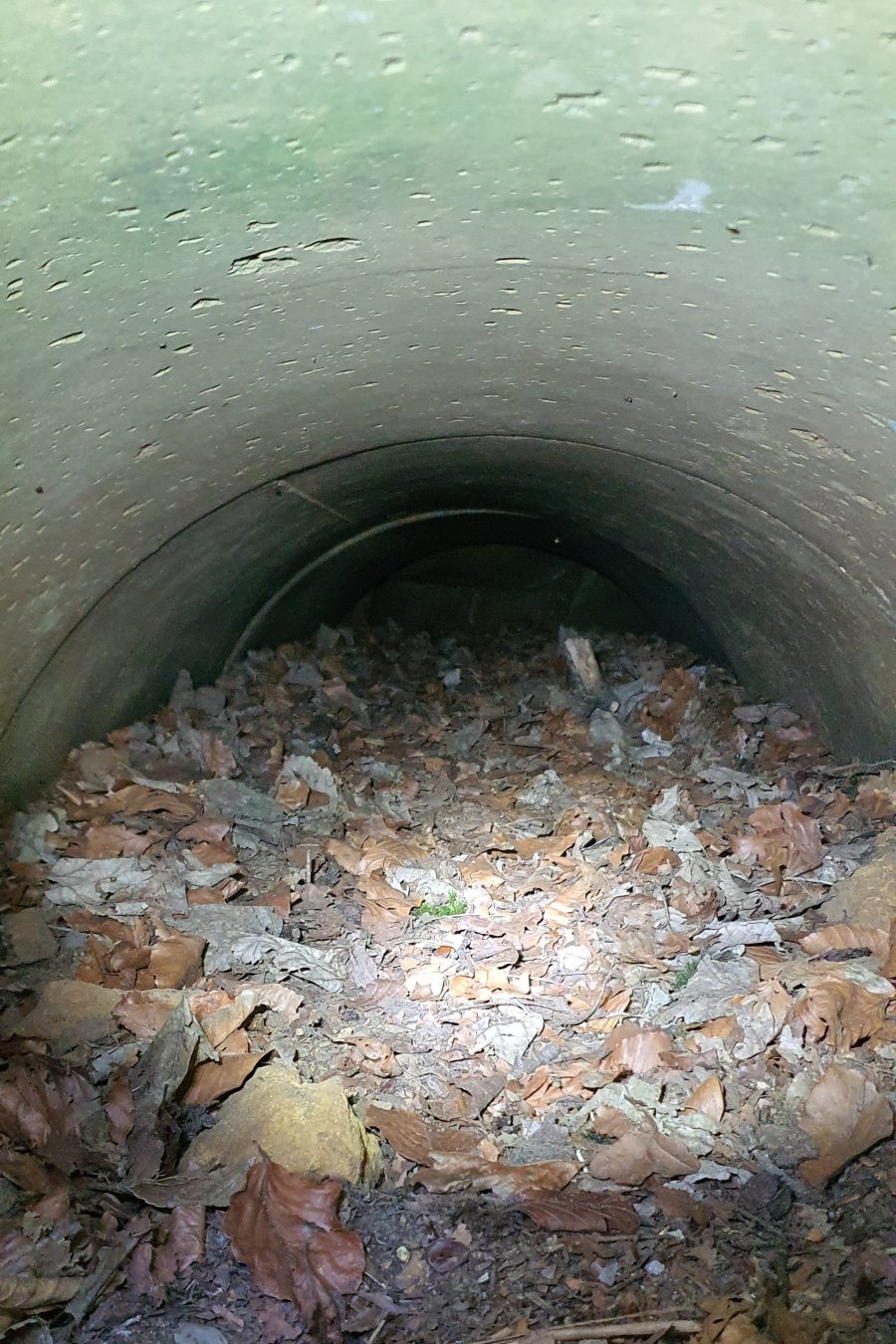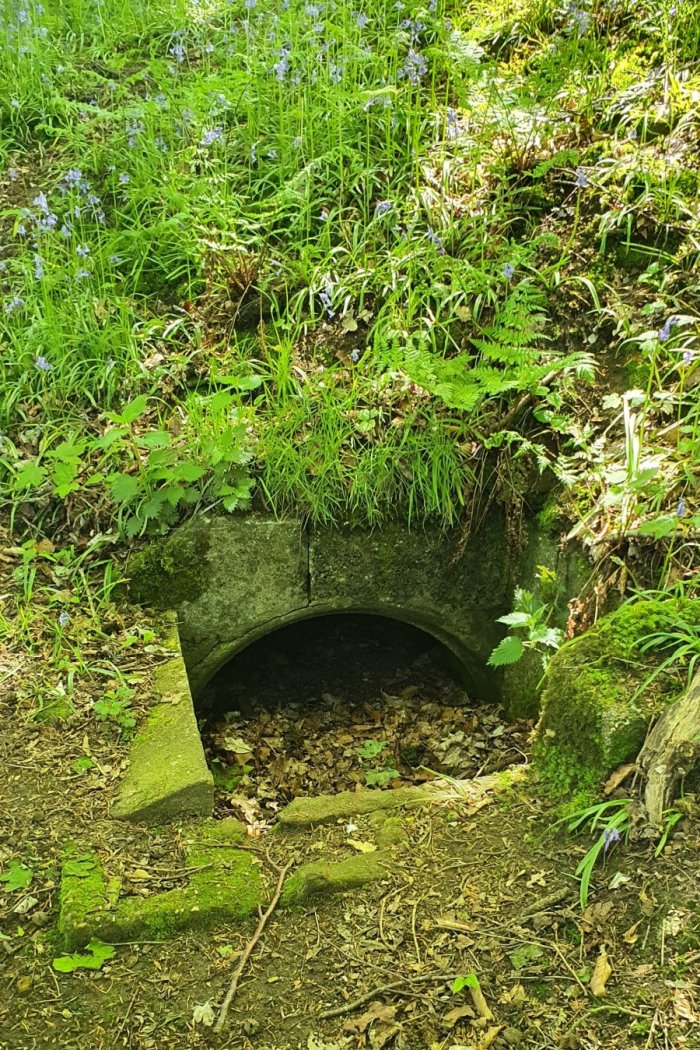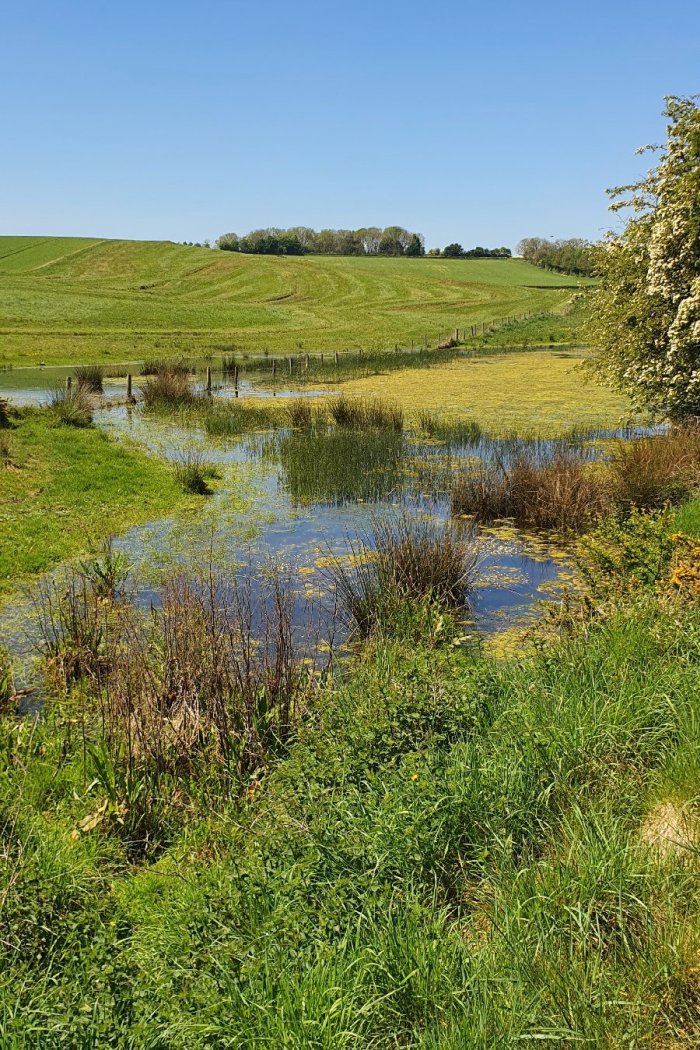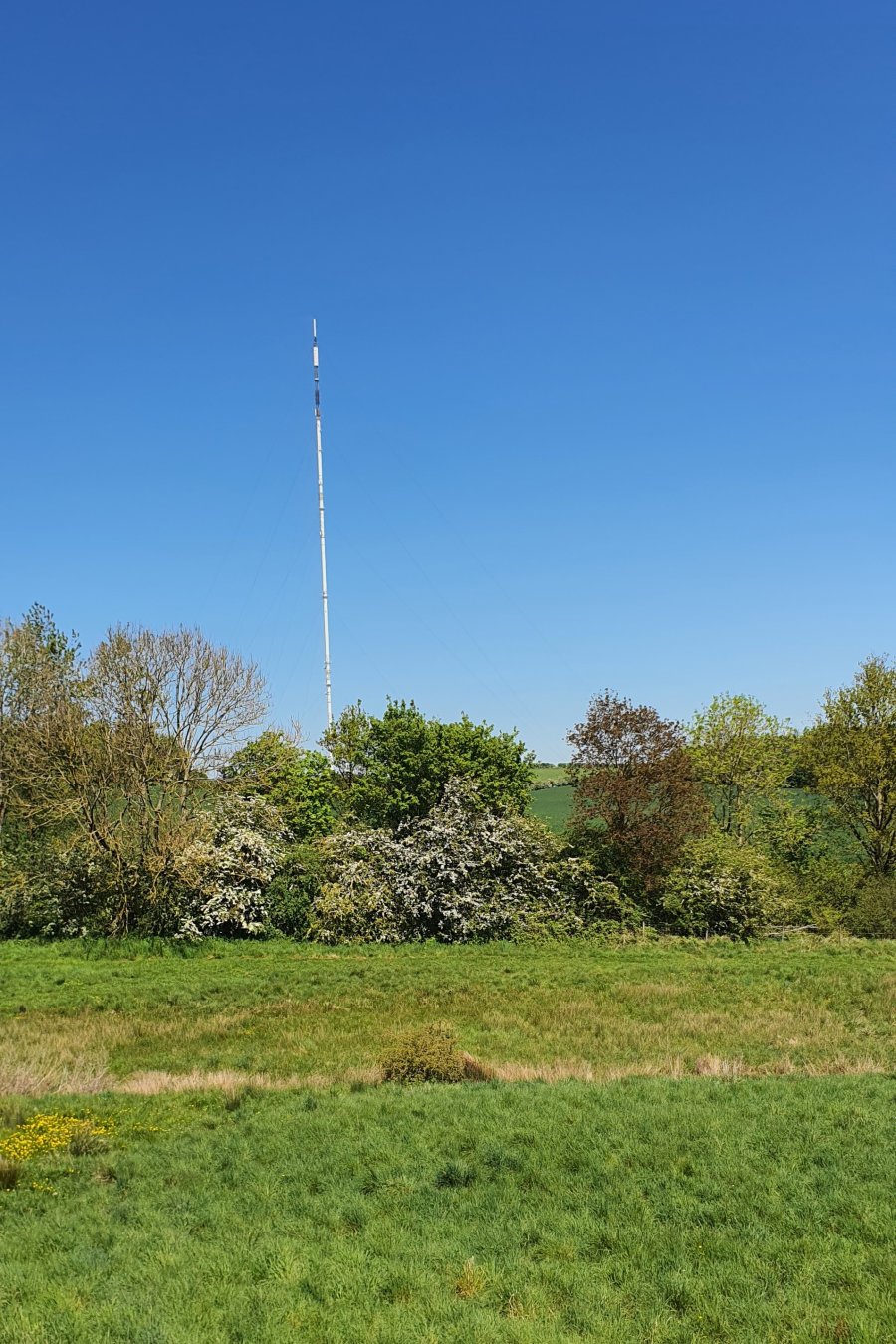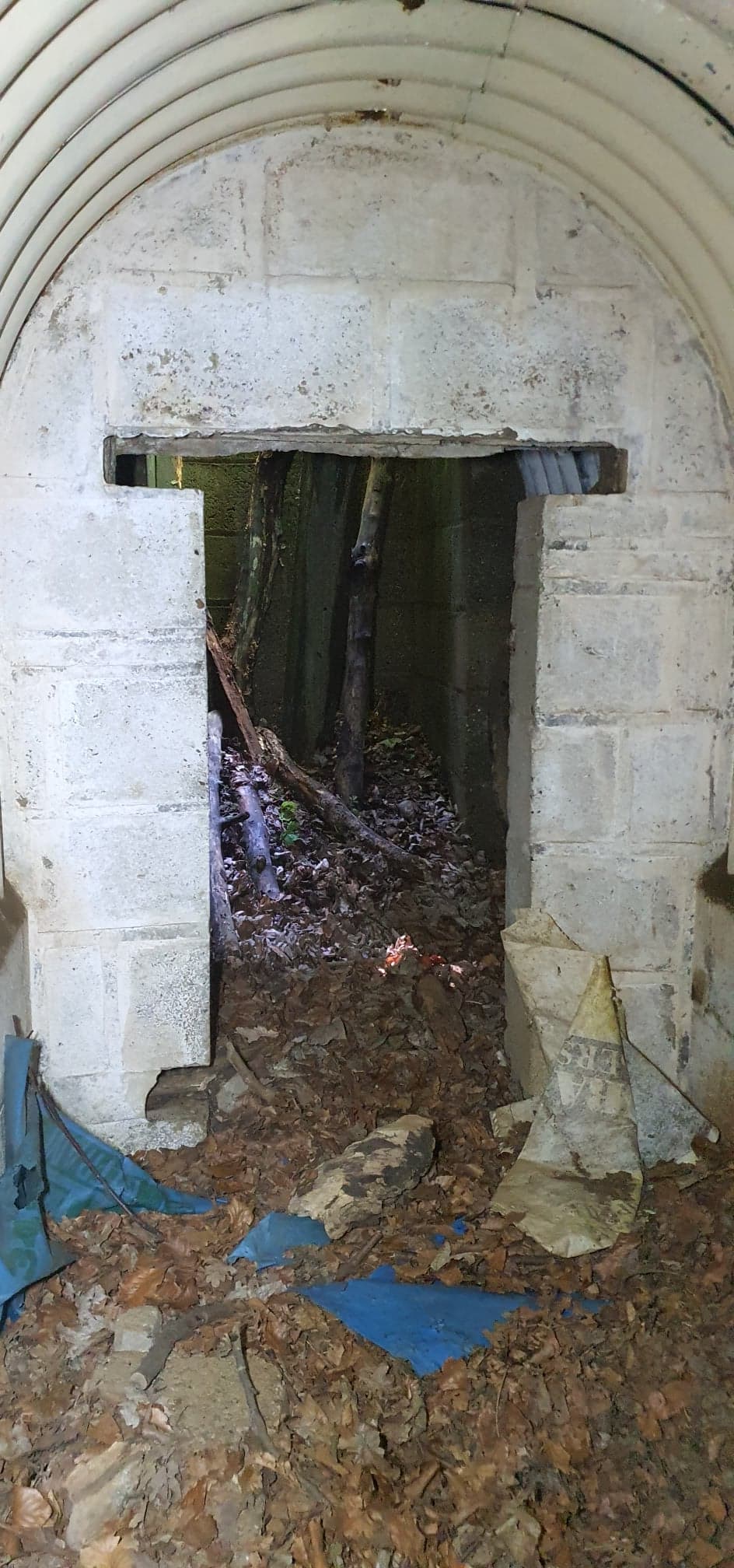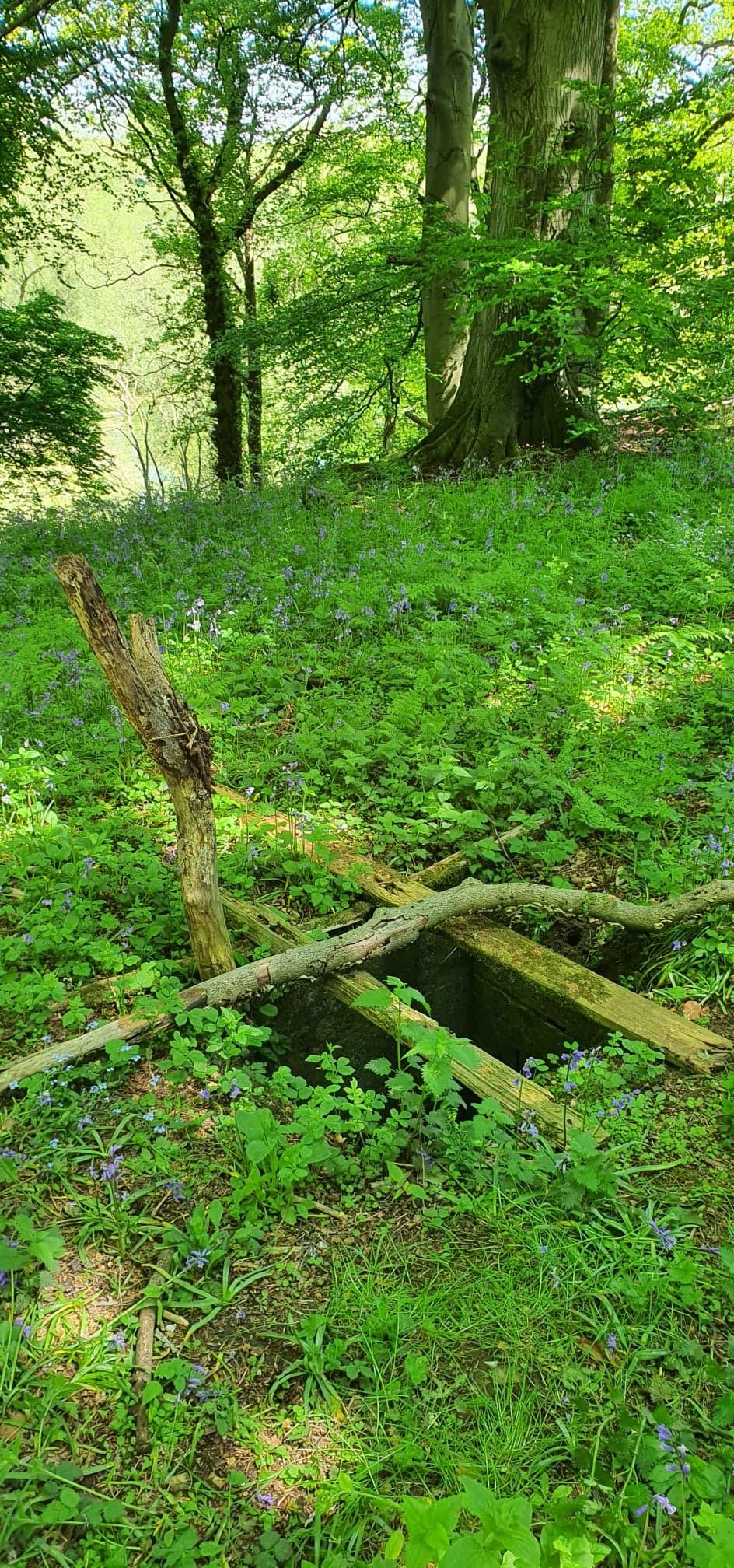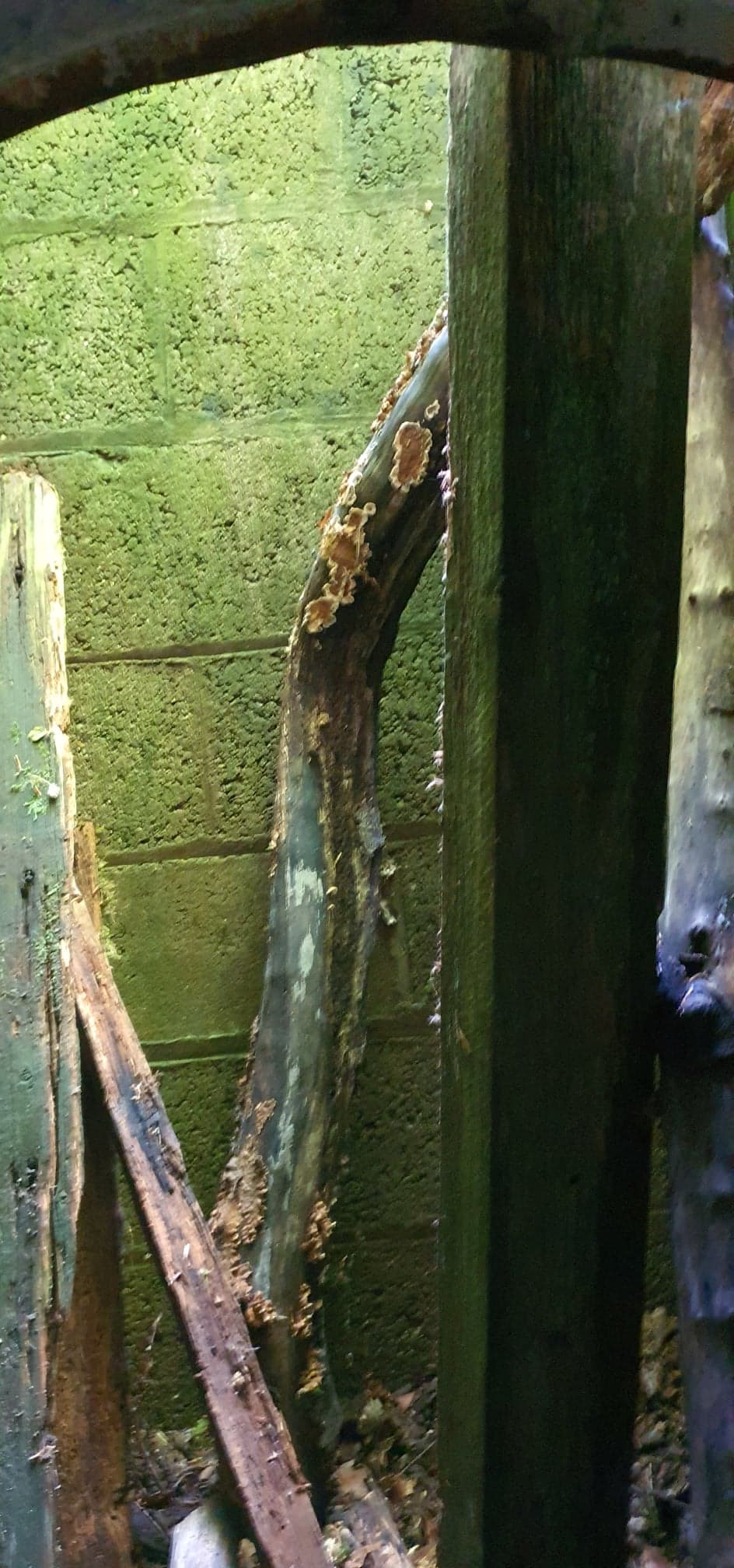| Role | Name | Posted from | Until |
|---|---|---|---|
| Operator | Mr Harold Gray | Unknown | 20 Jul 1944 |
Stan Judson, Royal Signals, recalled the second outstation as the original site was discovered. In common with many of the early sites, this was a metal lined wooden box buried in a wood. One evening, the two operators, Mr Gray and the manager of a local knacker's yard, were using the set when they were overheard by an RAF Officer and his WAAF girlfriend, likely from the RDF (Radar) station RAF Stenigot , who were courting in the woods. They crept away and called in the Army, who encircled the wood and arrested the men, and held them overnight as spies, until their identity could be established. Naturally after that the set could no longer be operated in that location.
The new site was an underground dugout built in in a small wood a short distance outside Donington-on-Bain on the edge of the Wolds, the hills surrounding the village. It was adjacent to the railway line, which closed in 1951 and was removed. The OB survives in good condition and consists of a shaft, entrance lobby, main chamber and escape tunnel. A detailed survey has shown it was built of concrete blocks, with Anderson shelter components on a low wall and concrete sewer pipe escape tunnel. An unusual feature is the large multi hole ventilation blocks in the end wall, one higher and one lower to ensure circulation of fresh air. The entrance shaft shows locating sites for brackets to secure a ladder and also to hold the brackets for a typical vertical lift hatch mechanism. The low door into the main chamber may originally have been disguised, but now even the door lintel is missing. Along one side of the main chamber a metal pipe enters and contains 2 aerial cables, indicating connections to two aerial trees, one for the Lincoln Zero Station and the other for the Louth Sub-outstation. The interior has been whitewashed to make it brighter. The escape tunnel heads straight out for two metres, before turning 45 degrees and running another 3 metres to the escape exit down the hill towards the pond.
The first large chamber is 2.8m long and 1.35m wide and 7ft high to centre of the roof. It is constructed of 9 inch hollow block construction and galvanised iron Anderson shelter frame. The escape tunnel is 2m long, 45° turn, then 3m constructed with 70cm wide bore tube pipe. Pipe end of chamber, coming back from tunnel, 70cm along wall is the 2 core wire.
The basic design is similar to other Special Duties outstation OBs seen elsewhere in the country, such as Rudry and Bewley Down. Nearby is Belmont Tower, a post war TV and radio transmitter mast and also RAF Steingot, a wartime Chain Home and post war radar station, which still has one of the masts in its original location. This shows the suitability of the area for wireless transmissions and why the outstation was located here. A video of the site is available on YouTube, although some of the accompanying details are not accurate.
Donington-on-Bain Outstation
Stan Judson
M Curme (Defence of Britain Project archive)
Dave Hunter
